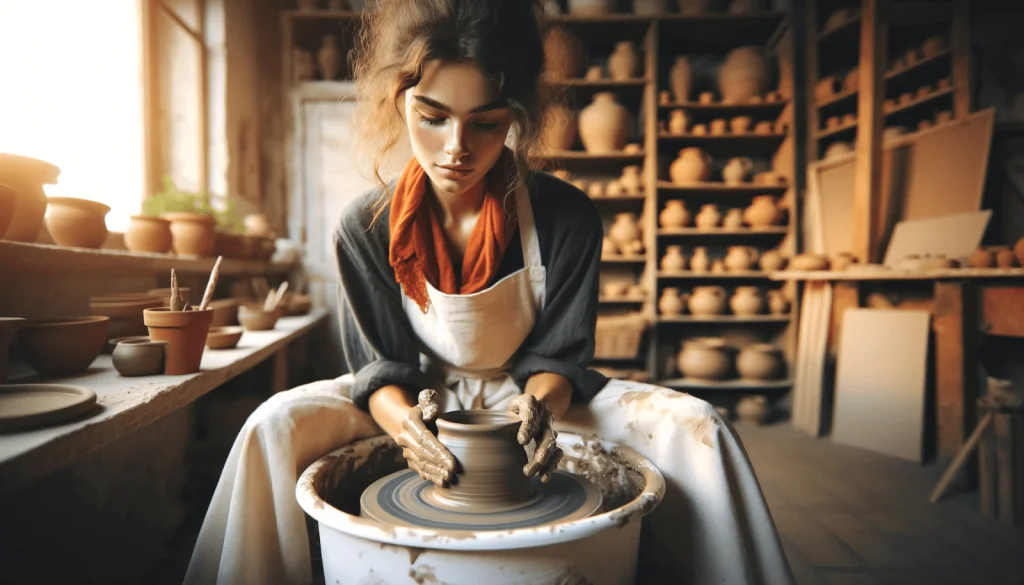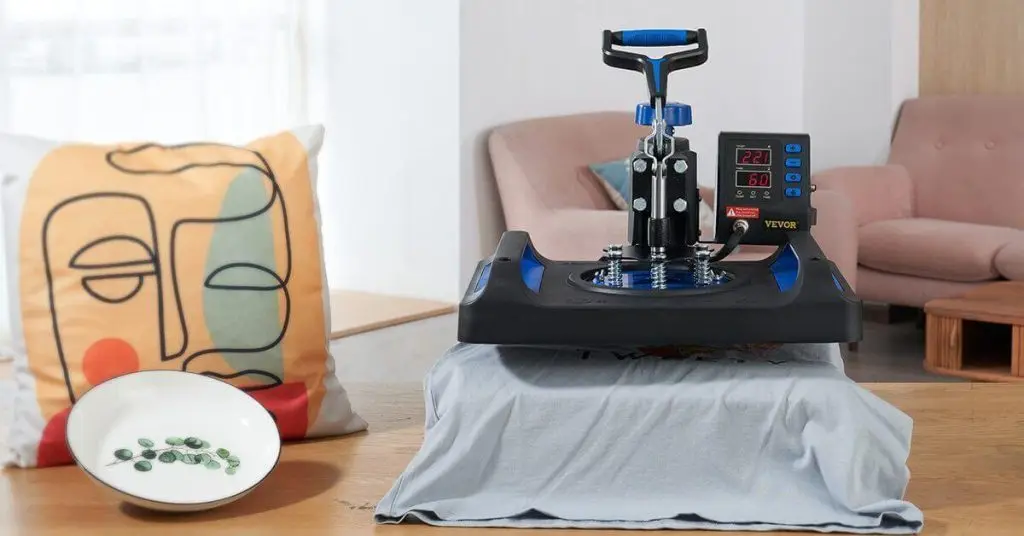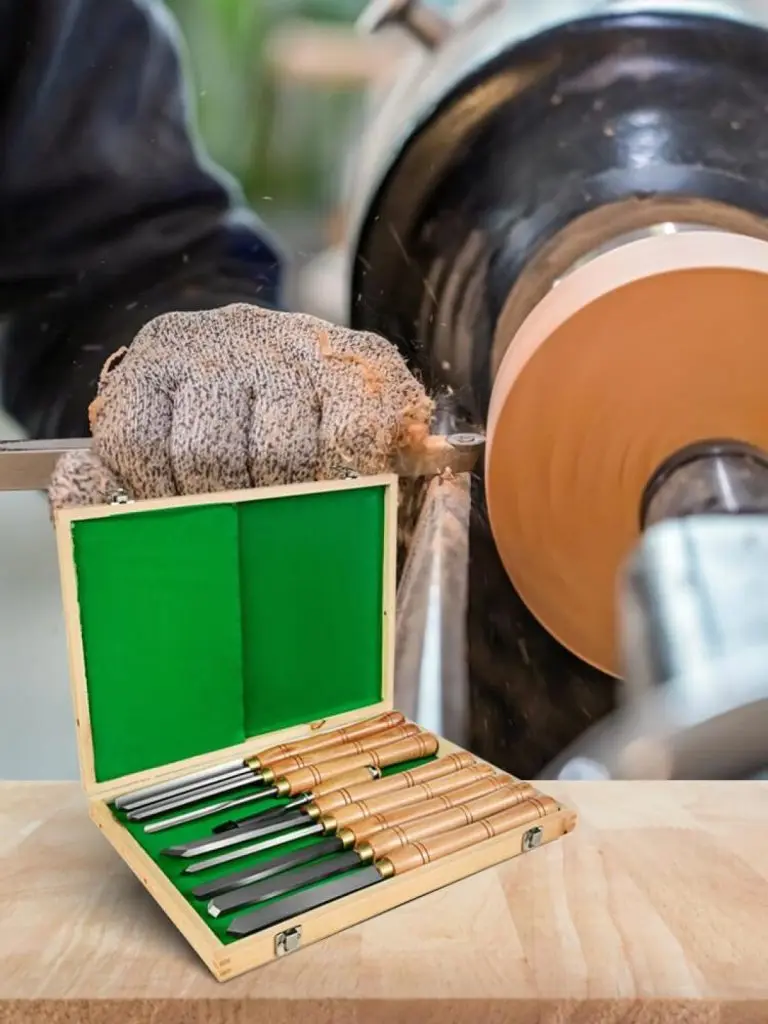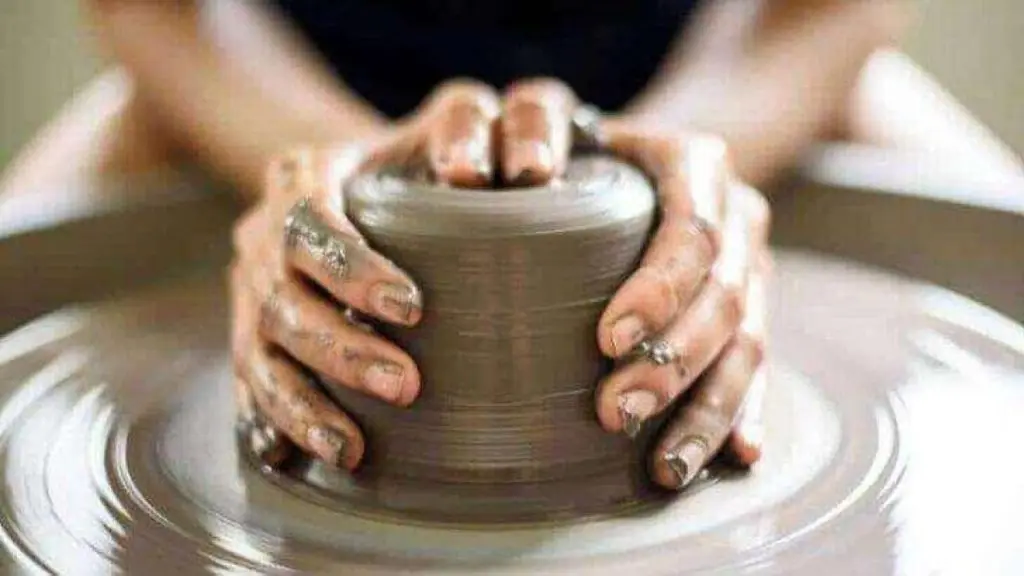If you’ve never used a pottery wheel before, but would love to make your own homemade pottery, then it’s time to learn how to use a pottery wheel. It’s exactly what we’re here to do today, so let’s do it and teach you everything there is to know about pottery wheels for beginners.
Table of contents
Pottery Wheels for Beginners: The Basics
A pottery wheel is a simple tool used to make and shape clay into a variety of objects, simply known as pottery. Some of the most commonly made objects with a pottery wheel include vases and bowls.
Pottery wheels have a circular top or wheel that spins in a circle, which may be electric or foot-powered. The rotation speed can generally be controlled. The clay is put on the middle of the pottery wheel, and uses their hands and tools to shape the clay as it spins in a circle.
Selecting the Right Pottery Wheel for You
One of the most important parts of the pottery wheel making process is of course the pottery wheel itself, but there are many different kinds to choose from. How successful your pottery making is may very well depend on the different types of pottery wheels available.
Types of Pottery Wheels
First, there are four main types of pottery wheels to consider, each one of which has its own benefits and drawbacks, so let’s take a quick look at each type.
- Electric Pottery Wheel: This type of pottery wheel has an electric motor that powers it, thus making it very easy for beginners to use. They have constant power and speed, and most even allow for changes in speed. These can be compact with low power levels, or very large as well. These are best for people who do pottery regularly.
- Kick Wheel: The kick pottery wheel is powered by a foot pedal, along with a flywheel that causes the wheel to spin. This is a good option for experienced potters who like this control style, although it is more difficult to use than the electric variety.
- Treadle Wheels: This type of pottery wheel is similar to the kick wheel, as it also uses a foot pedal, although the mechanism of motion is a bit different. It’s a good approach for those who like a calm and peaceful experience.
- Portable Wheels: These are just small electric pottery wheels that happen to be small and portable, often known as tabletop pottery wheels. Portable models such as this one from VEVOR are always great to consider.
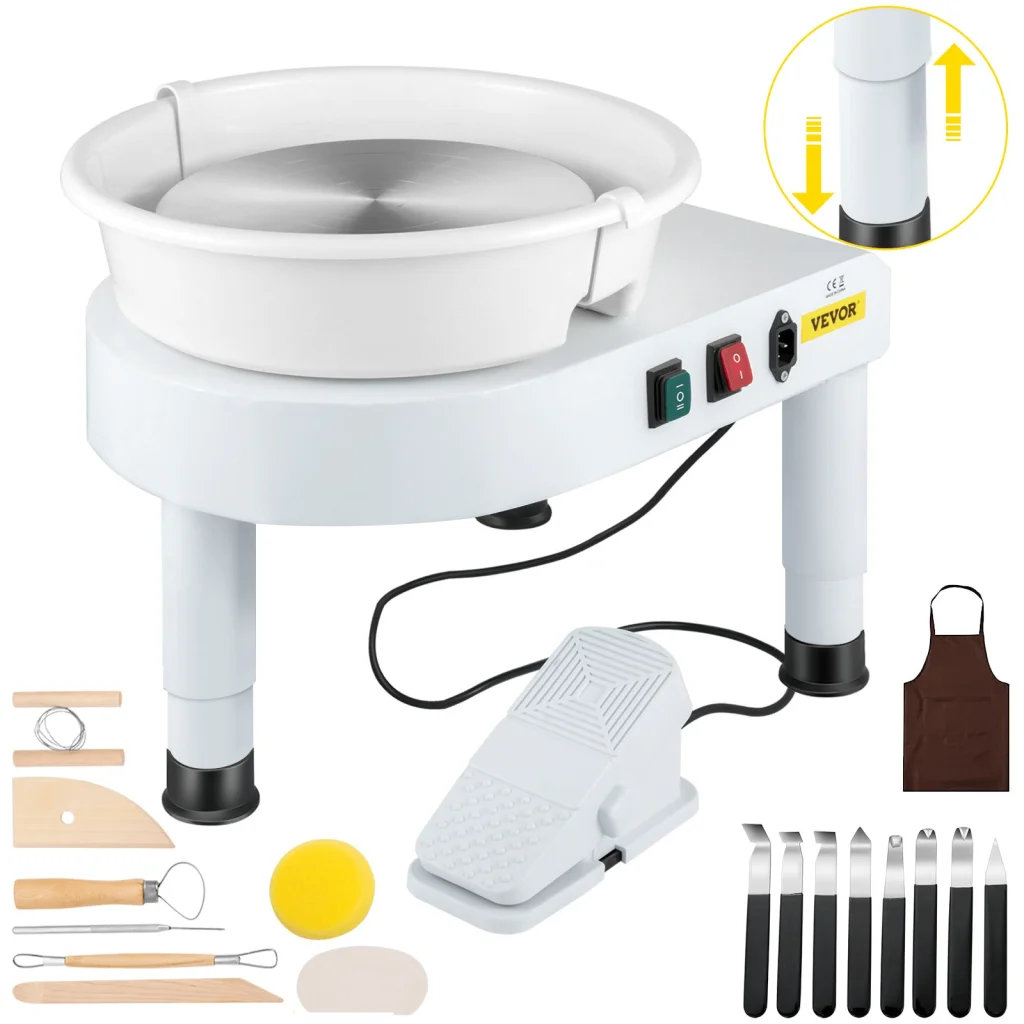
Factors to Consider When Selecting a Pottery Wheel
Choosing the right pottery wheel involves knowing what you are looking for. This section of our pottery wheel for beginners guide will focus on the different factors that need to be considered when selecting a pottery wheel.
Budget
Right off the bat, you’re probably constrained by a budget, and that means only being able to afford a certain type of pottery wheel. The smaller tabletop versions tend to be quite portable.
Your Skill Level
Depending on what your skill level is like, you might choose different types of pottery wheels. For instance, electric pottery wheels are great for beginners, whereas treadle and kick pottery wheels may be better suited for more experienced individuals.
Size
You then also want to consider the size of the pottery wheel in question, because the larger it is, the more room you have to work with, but the more space it will take up. There appears to be a bit of a tradeoff here. Keep in mind that larger wheel heads are better for bigger projects.
Adjustability
It’s always a good idea to get a pottery wheel that is adjustable in nature. Being adjustable means that you can adjust the bases or legs to ensure maximum comfort. You always need to consider the height that you’ll be working at. Being manually adjustable is very important, which is exactly what you get with the VEVOR Pottery Wheel.
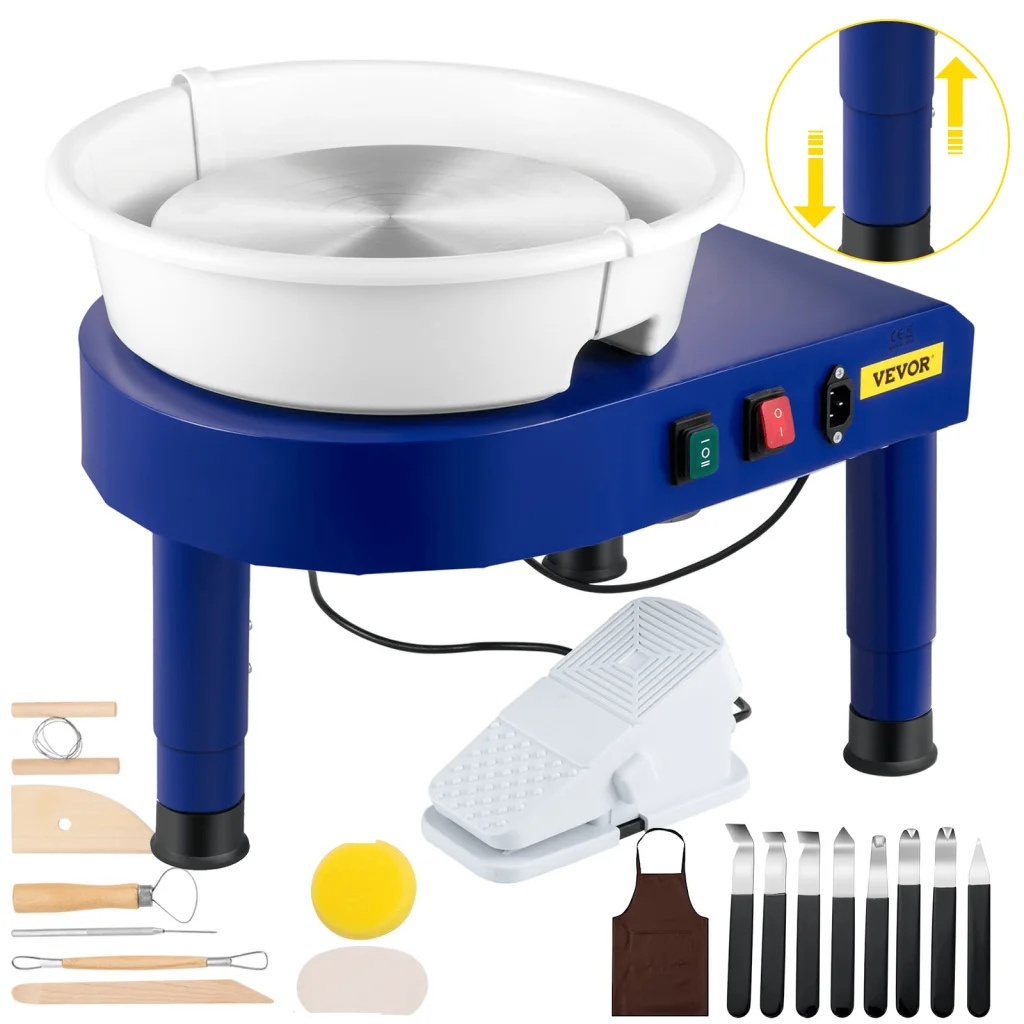
Durability
Always choose a pottery wheel that is made with high-quality components. You don’t want to get a pottery wheel just to have it fall apart on you after a few uses. You may also want to think about how easy it is to access replacement parts in the event that something does break.
Pottery Wheel for Beginners: Getting Set Up
Let’s go over some quick basics of how to get set up with a pottery wheel. It’s really not all that hard!
- Always choose the right type of wheel for your needs. Refer to the above sections for information on this. This VEVOR Miniature Pottery Wheel might be right for you!
- You’ll need to gather a few basic essentials. This includes things like wire cutters, sponges, trimming tools, ribs, and other basic tools.
- Something that many may not know is that choosing the right clay is also essential. Majke sure to do some research on the type of clay you are using in relation to your desired outcome.
- Prepare the work area to make sure that it is comfortable and that you have your tools nearby.

Safety Tips
Here are some important safety tips to follow as far as pottery wheels for beginners are concerned.
- Always use proper posture and sit up straight at the pottery wheel, or else you’ll end up hurting your back.
- Don’t wear any loose clothes or jewelry that may get caught in the pottery wheel.
- Make sure that floors are clean and clear, as wet or cluttered floors can be hazardous.
- If using an electric wheel, make sure to not spill water on it.
- When using trimming tools with sharp edges, exercise great caution.
- You should always wear a dust mask when working with clay.
Pottery Wheel Techniques and Tips
Let’s go over some pottery wheel basics for beginners to help get you started in your process.
Centering the Clay
To center the clay, put a chunk right in the middle of the wheel. Get your hands wet and manipulate the clay by pushing and squeezing it until it is at the very center of the wheel. This can take a bit of practice, but using your elbows for stability helps a lot.
Shaping and Forming Techniques for Beginners
To open the clay up, use your thumbs and press into the center of it and pull outwards. You can then gently squeeze the clay between your fingers as it spins, slowly moving your hands up to create the walls. You can then use ribs, trimming tools, sponges, and your fingers to shape the clay. Always keep your clay wet and your movements slow and calculated.
Common Beginner Mistakes and How to Avoid Them
There are some pretty big mistakes that beginners tend to make, so let’s help you avoid these.
- Not centering your clay properly is an issue, and this is something that can be easily learned.
- Applying constant and even pressure needs to be done when engaging in pottery, and not being constant is a big issue.
- Walls of pottery can collapse if you pull too hard or too fast on it, so avoid doing this.
- Overworking the clay is another big issue that needs to be avoided. This means knowing when to stop working with a particular piece of clay.
- Not using enough water is another issue you might be faced with, with the solution being simple, using more water.
Finishing the Pottery Process
To finish your pottery, you’ll first need to trim the excess parts off, and then allow it to dry. It needs to dry slowly, or else it might crack, and this can take a few days.
Glazing Techniques
There are several glazing techniques that you may use for making pottery, including the following.
- Brushing
- Dipping
- Spraying
- Pouring
- Sgraffito
Tips for Firing Pottery in a Kiln
To make it hard and permanent, pottery needs to be fired in a kiln, so let’s go over some quick tips on how to do this.
- Make sure that you are very familiar with the kiln you are using and its features.
- Make sure that the kiln is not overcrowded and that there is good air circulation on the inside.
- Always monitor the temperature to ensure that your pottery is being fired at the right temperature.
- The area that you are using the kiln in should be well ventilated.
Finishing Touches to Enhance Your Pottery
There are some finishing touches that you can apply to your potted piece to make it a little more refined. These include the following.
- Sanding the bottom and any other rough spots once the piece has gone through the kiln.
- You can apply wax to the bottom or other areas that will not be glazed.
- Use underglaze to apply fine details before the final glazing process.
How to Maintain a Pottery Wheel
- Here are some important tips to help you maintain your pottery wheel.
- Always remove debris after using a pottery wheel, and make sure to clean it every time.
- Keeping the moving parts lubricated is crucial for the overall function of the machine.
- Always check for loose nuts or bolts and tighten them as needed.
- Make sure that the potter wheel does not develop rust.
Troubleshooting Common Issues
- There are some common issues pottery wheels may have, so let’s troubleshoot them.
- If the wheel isn’t spinning properly, check for any kind of obstruction. It may also need lubrication.
- If you are hearing odd noises, chances are your unit needs some maintenance.
- If there are movement issues, make sure that all components are functional.
Pottery Wheel for Beginners: FAQ
Let’s quickly answer some of your most frequently asked questions about pottery wheels for beginners.
What is the best type of pottery wheel for a beginner?
An electric pottery wheel that allows for speed control is generally considered best for beginners.
How much should I expect to spend on a beginner’s pottery wheel setup?
You will usually have to spend at least $400 to get started with a pottery wheel setup.
What are some common challenges beginners face on the pottery wheel and how can they be overcome?
Some common challenges that beginners need to overcome include difficulty with keeping the clay centered, keeping the thickness even, and having forms collapse due to overwork.
Are there online resources or communities for beginner potters to learn and share experiences?
There are plenty of online resources that can help you become a better potter, including tutorial sites, online forums, social media, and YouTube too.
Conclusion
As you can see, pottery wheels are actually quite simple, and with a few easy steps, you can start your journey to becoming your own pottery wheel pro. If you’re looking for a high-quality yet affordable pottery wheel, then those from VEVOR are always great to consider!

